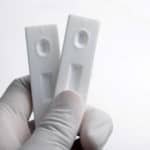HCV Cure Associated with Early Drop in Viral Load
Overcoming virus early beats hepatitis
Adam Cresswell, Health editor | May 24, 2008
www.theaustralian.news.com.au
DRIVING down the number of circulating copies of the hepatitis C virus to undetectable levels in the earliest stages of infection makes it highly likely that the patient will eventually be cured – even among patients who are also infected with HIV.
The findings, the interim results from an Australian study presented to a recent international conference in Italy, suggest that rapid virological response – or RVR, the term used to indicate successful suppression of viral load within four weeks of starting treatment – is just as good a predictor of eventual cure among patients suffering acute hepatitis C infection as it is already known to be among chronically infected individuals.
In addition, the trial – which is still continuing – suggests new treatment options for difficult-to-treat groups such as people with HIV and injecting drug users. Unlike most hepatitis C treatment studies, this research included significant numbers of HIV patients and injecting drug users, and the findings showed RVR was just as good at predicting eventual cure in these as in other patients.
The Australian Trial in Acute Hepatitis C, known by its acronym ATAHC, was funded by the US National Institutes of Health. The interim findings were presented as a poster at the recent annual scientific meeting of the European Association for the Study of the Liver in Milan, where it was voted into the top 10 per cent of the more than 800 poster presentations at the meeting.
An estimated 264,000 Australians have been exposed to hepatitis C, a blood-borne virus that attacks the liver and left untreated can lead to liver inflammation, cirrhosis and eventually cancer.
Although 25 per cent of people clear the virus naturally, the prognosis for the remaining 75 per cent is more difficult as most will usually experience symptoms such as debilitating fatigue, pain and nausea.
While cure is possible with drug therapy, the drugs are quite toxic and hard to tolerate. Treatment also lasts a year and only works in fewer than 50 per cent of cases. Co-infection with HIV makes it even harder to eradicate hepatitis C.
Sydney-based hepatitis expert Greg Dore, a co-author of the study and who attended the Milan conference, said the message from the ATAHC findings was that if doctors could drive viral levels down to undetectable levels early “you can get incredibly good response rates”.
While 107 patients in the study elected to have treatment for acute hepatitis C, 84 patients continued to the point where they had data on their progress after four weeks of treatment. Among the 26 patients infected with HIV as well as hepatitis C, RVR, or complete viral suppression, was observed in 10 people (45 per cent), and in 28 out of the 58 patients infected with hepatitis C alone (48 per cent).
Those with high hepatitis C viral loads at the start of treatment, with more than 400,000 international units per millilitre of blood, were less likely to achieve RVR.
Finally, 53 patients were assessed for both RVR and for sustained virological response, or SVR, a longer-term measure that is often taken to mean the patient has been cured. All the participants who achieved RVR went on to achieve SVR, and even 59 per cent of those who did not achieve RVR went on to be cured later.
The study’s authors concluded that patients treated for acute hepatitis C infection and who achieved RVR “are highly likely to achieve SVR, irrespective of HIV status”.
“This is the largest study ever of an injecting drug-user population with early infection,” said professor Dore, who is head of the viral hepatitis clinical research program at the Sydney-based National Centre in HIV Epidemiology and Clinical Research.
“We have shown that it is feasible to treat this group, many of whom have been recent injecting drug users, and get remarkably good outcomes.
“What we are looking at now is to apply to the NIH for another five years’ funding, to look at the different strategies to optimise treatment outcomes in this group.”
Dore’s colleague doctor Gail Matthews said the high proportion of HIV-positive cases in the study participants, about one-third, “probably reflects a current increase in acute HCV in this population – predominantly acquired through sexual transmission and mirroring what is being reported from many centres in Europe”.
“This has potential implications for public health messages in this group,” she said.
Adam Cresswell’s trip to the EASL conference in Milan was organised as part of the prize for winning the Professor Geoff Farrell Medal, a journalism award organised by Hepatitis Australia for writing about hepatitis C. Funding for the award was provided by the drug company Schering-Plough.







